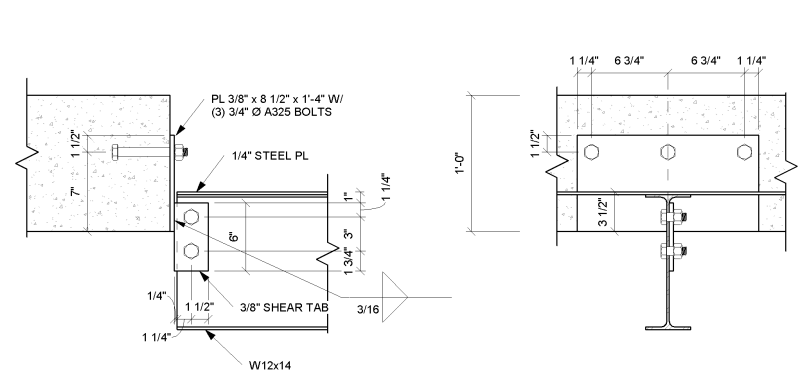cal91
Structural
- Apr 18, 2016
- 294
I'm working on an automated parking garage, and have got this connection to work by the numbers.
There is only a 3.5" overlap in elevation from bottom of 12" concrete slab to top of steel for this connection.
The reaction is 7.5 kips *1.6 = 12 kips (live load) in shear, no axial load.
I'm worried about the beam's torsional stability (despite there being 0 torsion even w/ unbalanced LL).
Any thoughts if this looks too funky, or something to add for stability without being too costly?

There is only a 3.5" overlap in elevation from bottom of 12" concrete slab to top of steel for this connection.
The reaction is 7.5 kips *1.6 = 12 kips (live load) in shear, no axial load.
I'm worried about the beam's torsional stability (despite there being 0 torsion even w/ unbalanced LL).
Any thoughts if this looks too funky, or something to add for stability without being too costly?


